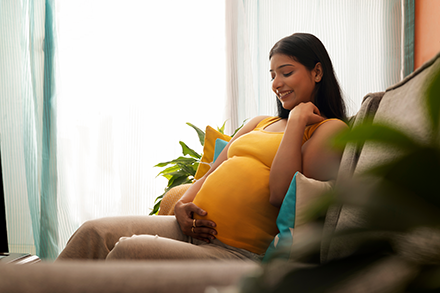
For most women, pregnancy represents a normal part of life. Pregnancy can be one of the happiest times in a woman’s life, but sometimes it may leave a woman feeling scared, anxious, and unsure of what to expect. Throughout pregnancy, a woman’s body goes through many physical and emotional changes which can be very frightening at times. Although these feelings can be overwhelming, pregnancy and the birth of a child can be one of the most fulfilling and life changing experiences of a woman’s life.
Pregnancy can allow a woman to bond with her spouse, partner, significant other, family and friends to develop a strong support system. For many men, pregnancy is a time of intense learning and preparation for the responsibility of fatherhood. The connections that are established are important for the well-being of an expectant mother during pregnancy and after the birth of their child.
A pregnant mother, who feels as though she lacks a strong support system, should not feel alone. There are several agencies in North Dakota that are available to support a woman throughout her pregnancy and following the birth of her baby. For a list of prenatal, pregnancy, postpartum, and parenting services, resources and contact information, visit life.nd.gov.
It is the policy of the state of North Dakota that childbirth is given preference, encouragement and support as it is in the best interests of the well-being and common good of North Dakota citizens.
Growth and Development
SOURCE: Information About Pregnancy and Abortion - A North Dakota Century Code 14-02.1, Abortion Control Act publication
Approximately two weeks after the first day of a menstrual period (in a 28-day cycle), a woman ovulates or releases an egg from the ovary. Over the course of about a week, the egg will travel through the fallopian tube to the uterus. If a sperm cell fertilizes the egg and successfully implants in the uterine lining, the woman is pregnant.
Pregnancy can be measured in two ways: fertilization age and gestational age. Fertilization age refers to how long the unborn child has been developing since the egg was fertilized and is calculated from the estimated day of ovulation. Ovulation can vary each month and there are no obvious signs that tell a woman exactly when she ovulates, so the date of fertilization can only be an estimate. Gestational age is measured from the first day of the last menstrual period. A menstrual period provides a known date from which to measure the pregnancy.
Gestational age is more accurate and more commonly used when discussing pregnancy. About nine calendar months, 10 lunar months, 40 weeks, or 280 days go by between the first day of the last menstrual period and the birth of the child.
The development of the unborn child depends on many factors and will vary somewhat for each pregnancy. This booklet will describe normal, approximate growth and development at gestational ages. The pictures in the Growth and Development section of this booklet do not represent the actual size of the developing child. Approximate sizes are provided in the text for most weeks.
- Nicotine in commercial tobacco or alternative nicotine products
- Alcohol
- Some prescription medicines and over-the-counter drugs
- Illegal drugs
- Viruses (like German measles)
- X-rays, radiation therapy or accidental radiation exposure
- Vitamin deficiencies (such as folic acid)

Child Development Throughout Pregnancy
First Trimester
4 Weeks Gestation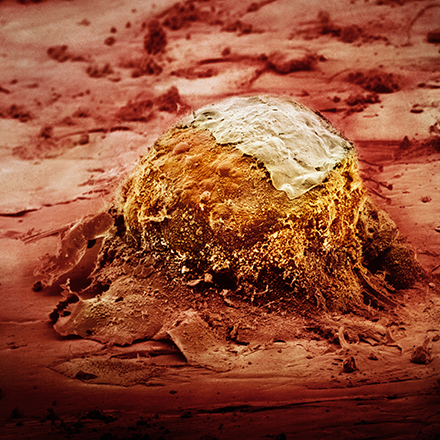
- The fertilized egg, now called an embryo, has traveled through the fallopian tube and may implant in the uterus.
- The heart and nervous system will soon begin to form.
- By the end of week four or during week five, most women notice a missed menstrual period.
- The embryo is about the size of a poppy seed.
Photograph Source: Lennart Nilsson, used with permission
6 Weeks Gestation
- The neural tube forms, which will become the spinal cord and brain.
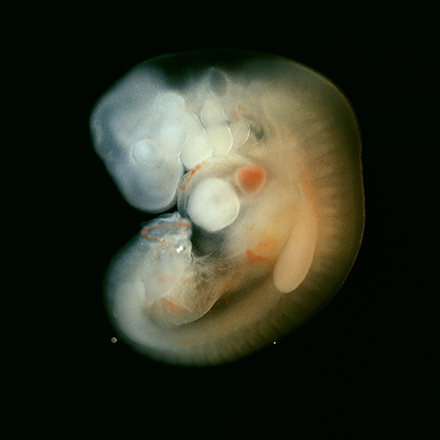
- The heart, now a system of two tubes, continues to develop and has started to beat.
- Branches of the respiratory system are growing.
- The body is C-shaped with the head curved toward the tail (legs).
- Structures that will become arms and legs begin to appear as buds.
- Structures that will become the eyes and ears are beginning to form.
- The embryo is about the size of a pea.
Photograph Source: Lennart Nilsson, used with permission
8 Weeks Gestation
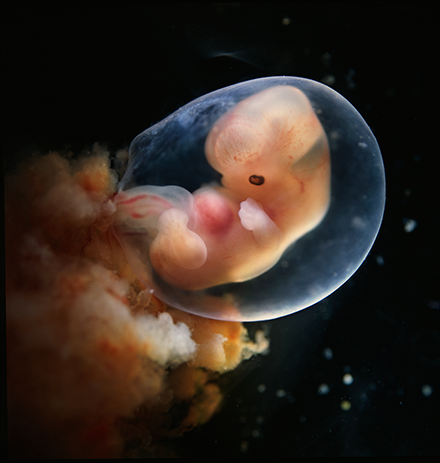
- The heart now has four chambers, but it is still too early to hear the heartbeat from the outside.
- The brain is growing rapidly.
- Tubes that will become the digestive tract are forming.
- Limbs (arm and legs) continue developing.
- Lungs and eyelids are beginning to form.
- The skeleton is soft and made of cartilage.
- The embryo is about the size of a kidney bean.
Photograph Source: Lennart Nilsson, used with permission
10 Weeks Gestation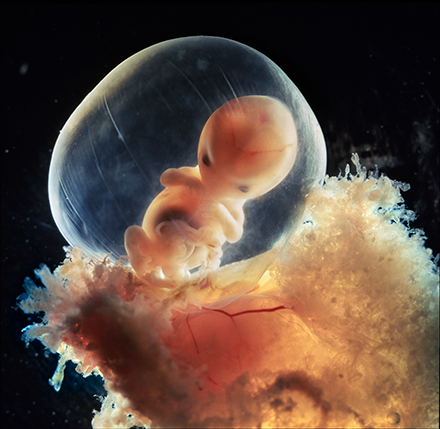
The term fetus is now used to describe the developing child.
- The heartbeat can now be detected by ultrasound.
- Electrical activity from the brain can be recorded.
- Real bone starts to take the place of cartilage.
- The beginnings of all the key body parts and organs are present, although they are immature and not exactly positioned in their final locations.
- The fetus is about the size of a brussels sprout.
Photograph Source: Lennart Nilsson, used with permission
12 Weeks Gestation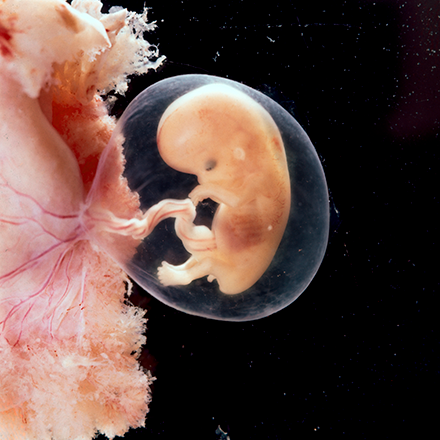
- The heart is complete and will continue to mature.
- Small movements of the arms, legs and chest are being made, but are too slight to be felt.
- Skin is starting to cover the body and fingernails start to grow.
- The eyelids cover the eyes, and the eyes remain closed until about week 26.
- The kidneys and digestive system are beginning to function.
- External genitalia are present, but still difficult to see by ultrasound.
- The fetus is about the size of a lime.
Photograph Source: Lennart Nilsson, used with permission
14 Weeks Gestation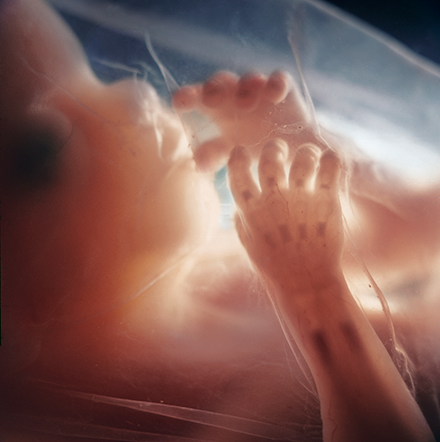
- The heart is growing and pumping blood.
- The brain surface is smooth, without the grooves that will develop as it matures.
- Kidneys begin to make small amounts of urine.
- Fine hair, called lanugo, begins to cover the delicate skin.
- Ultrasound may possibly identify gender.
- The fetus is about the size of a lemon.
Photograph Source: Lennart Nilsson, used with permission
Second Trimester
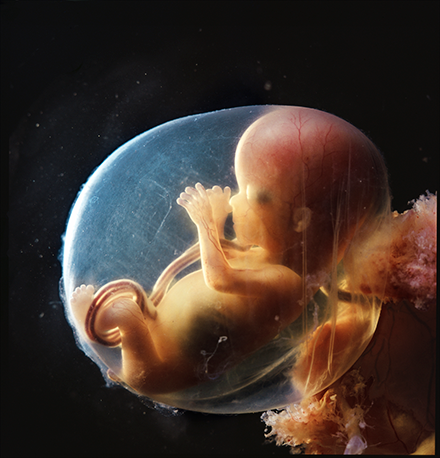 16 Weeks Gestation
16 Weeks Gestation
- The heart muscle is well developed.
- The lobes of the brain are taking shape.
- Developing muscles and bones make the body stronger.
- The skin is transparent and blood vessels are visible under the skin.
- The fetus is about the size of an avocado.
Photograph Source: Lennart Nilsson, used with permission
18 Weeks Gestation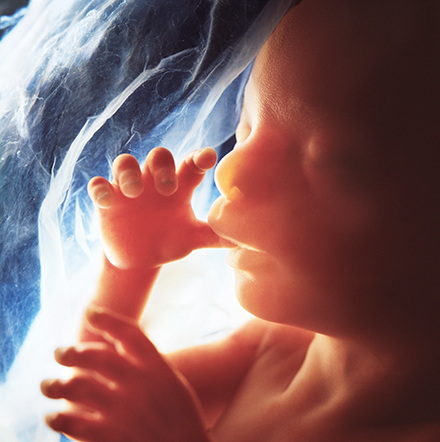
- 18 Weeks Gestation
- The heart is pumping blood to the lungs.
- Swallowing and sucking reflexes are present.
- Fingerprints are forming.
- Many women will start feeling movements soon.
- The fetus is about the size of a mango.
Photograph Source: Lennart Nilsson, used with permission
20 Weeks Gestation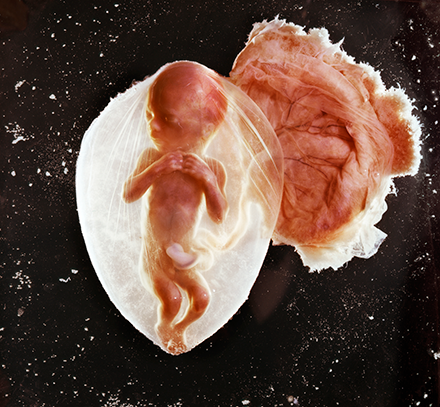
- The heart continues to get stronger and pump more blood through the body.
- All organs and structures, including the brain, have been formed and continue to develop but are too immature for survival outside of the womb.
- The skin is thin, wrinkled and covered by vernix, a waxy white protective substance.
- Most women feel moving or fluttering sensations.
- Hair on the head is growing.
- The fetus is about the length of a banana.
Photograph Source: Lennart Nilsson, used with permission
22 Weeks Gestation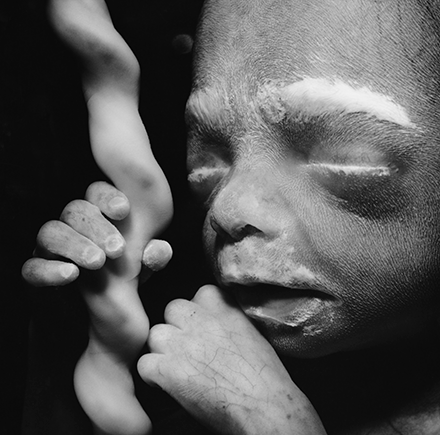
- The heart is beating strongly enough to hear with just a stethoscope.
- The nerves throughout the body are maturing.
- The hands can grasp and play with the umbilical cord.
- A child could potentially survive outside the womb, but survival rates are very low and the risk for permanent disability is high. Most babies born before this time have little chance of survival.
- The fetus is about the length of an ear of corn.
Photograph Source: Lennart Nilsson, used with permission
24 Weeks Gestation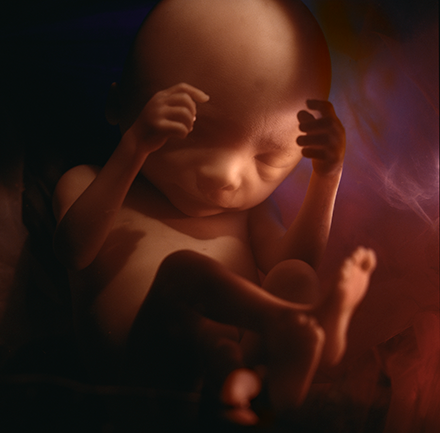
- The heart will soon pump blood into the tiny developing capillaries.
- Another period of rapid brain maturation is beginning.
- The skin is still loose and wrinkled.
- The sense of sound is developing.
- The lungs are immature and survival rates outside of the womb are 50 to 60% with a high risk for permanent disability.
Photograph Source: Lennart Nilsson, used with permission
26 Weeks Gestation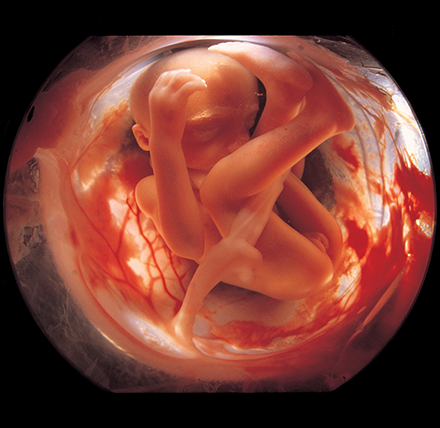
- The heart and circulatory system are well developed.
- The brain and nervous system start taking control of some body functions.
- The body is thin due to the lack of body fat, but weight is being put on steadily.
- Fingerprints are being developed.
- Eyes begin to open and close.
- The lungs are maturing, which makes survival rates outside of the womb better (approximately 80%), but there is still a risk for permanent disability.
Photograph Source: Lennart Nilsson, used with permission
Third Trimester
28 Weeks Gestation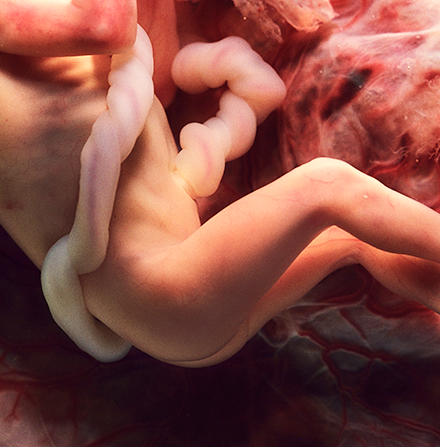
- The heart continues to get stronger.
- The brain and nerves can respond to light and sound.
- Eyelashes are present and eyes can blink.
- Many women may feel hiccup sensations and notice sleep-wake cycles.
- Survival rates outside of the womb are about 90%, but all body systems are still immature.
Photograph Source: Lennart Nilsson, used with permission
30 Weeks Gestation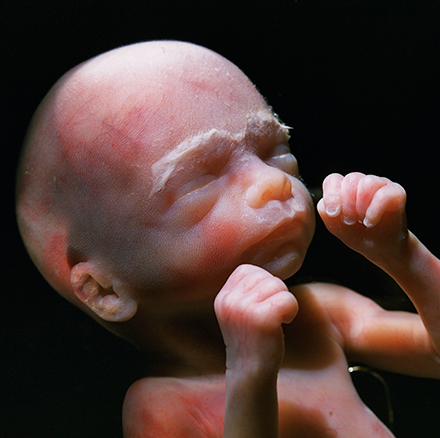
- The heart pumps more blood to the brain than anywhere else in order to help the brain grow.
- The brain continues maturing and can control breathing and body temperature.
- The lungs are almost ready to breathe air outside of the womb.
- The body starts to assume a head-down position.
- The fetus continues to put on weight and is about the size of a cabbage.
Photograph Source: Lennart Nilsson, used with permission
32 Weeks Gestation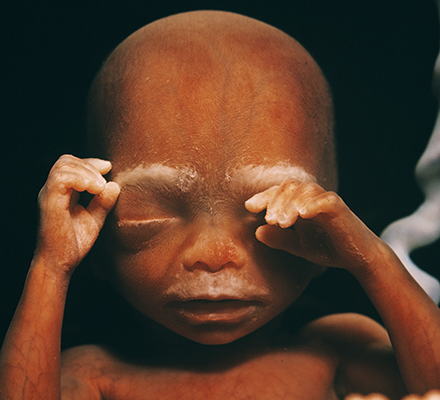
- The heart continues to get nutrients and remove wastes through the placenta.
- Brain cells are interacting to prepare for learning, speaking and survival.
- The skin is pink and no longer so transparent.
- Toenails are now fully formed.
- Growth in length slows as weight gain increases.
- The possibility of survival outside of the womb continues to improve.
Photograph Source: Lennart Nilsson, used with permission
34 Weeks Gestation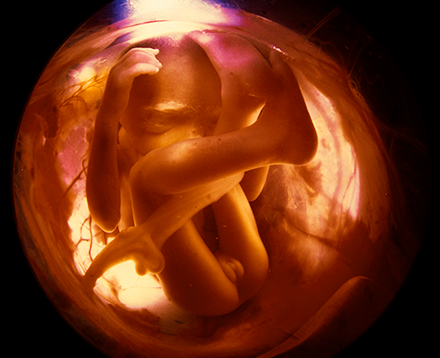
- The heart rate begins to slow down a little.
- The head is making room for the growing brain.
- The eyes close during sleep and open during alert times.
- The skin becomes more smooth, plump and pigmented.
- Survival rates outside of the womb are more than 95% and children born now may not need critical care.
- The fetus is almost his or her full length and continues gaining about a half a pound per week.
Photograph Source: Lennart Nilsson, used with permission
36 Weeks Gestation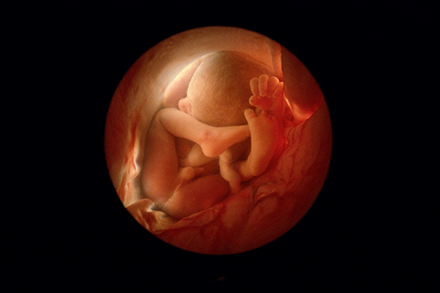
- The heart wall has a hole called the foramen ovale that will naturally close after birth.
- The brain is very active.
- Muscle tone improves so the head can be turned and lifted.
- The hair on the head is getting longer.
- Meconium, the first bowel movement, is forming in the intestines.
- Chances for survival outside of the womb are very good.
Photograph Source: Lennart Nilsson, used with permission
38-42 Weeks Gestation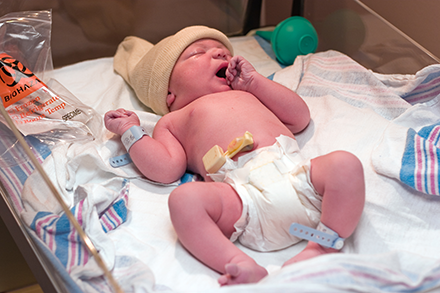
- Full term ranges from 38 to 42 weeks gestation.
- The heart rate is about 120 to 160 beats per minute.
- The bones over the brain have flexible spaces between them called fontanels that adjust to the birth canal during delivery.
- The grasp reflex is strong and more deliberate.
- Lungs are mature and capable of breathing.
- Sexual characteristics are mostly defined and if it’s a boy, testes will descend.
- Protective antibodies from the mother’s immune system are being passed through the placenta and can be passed through breastmilk after delivery.
- The body systems are mature enough for survival outside of the womb.

